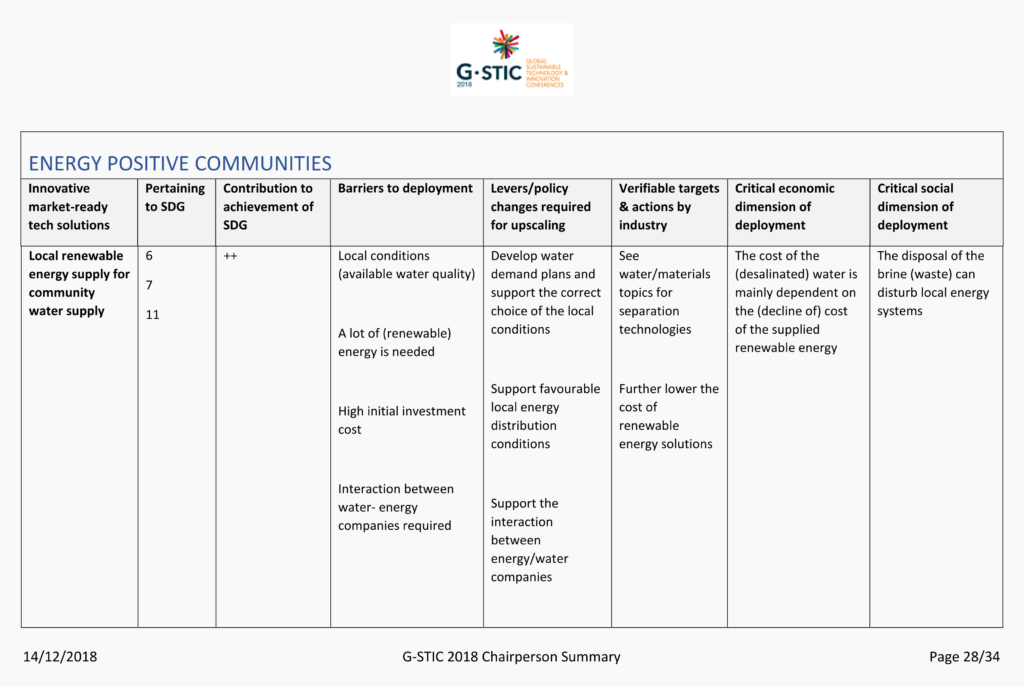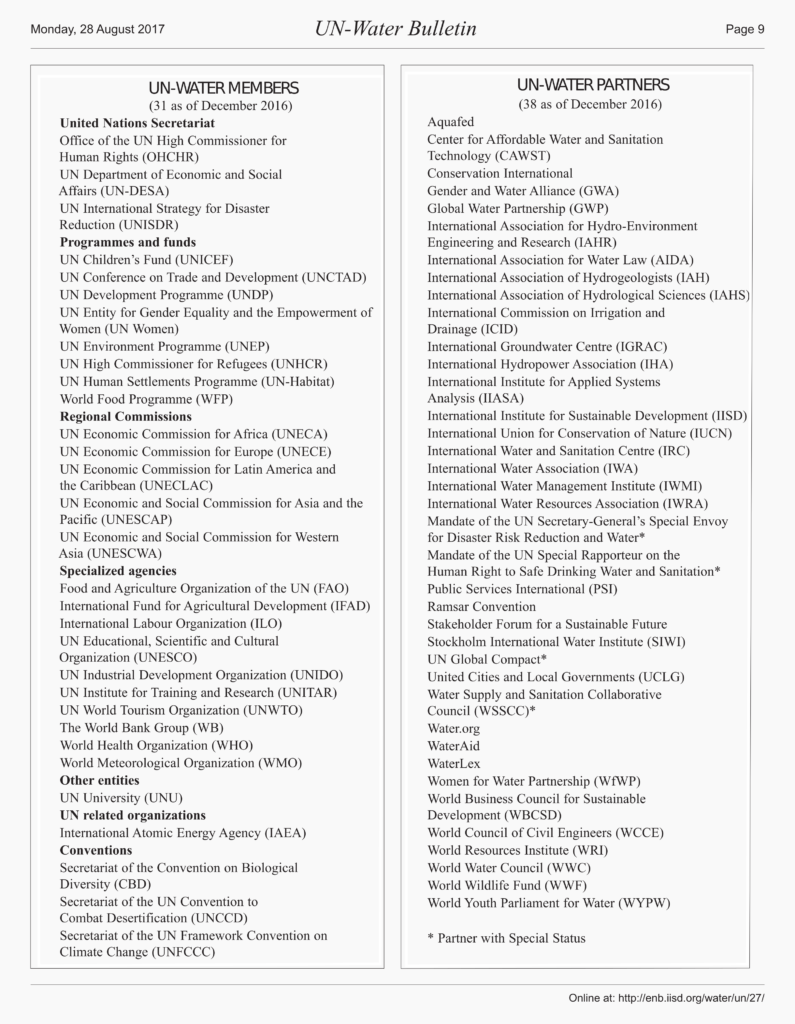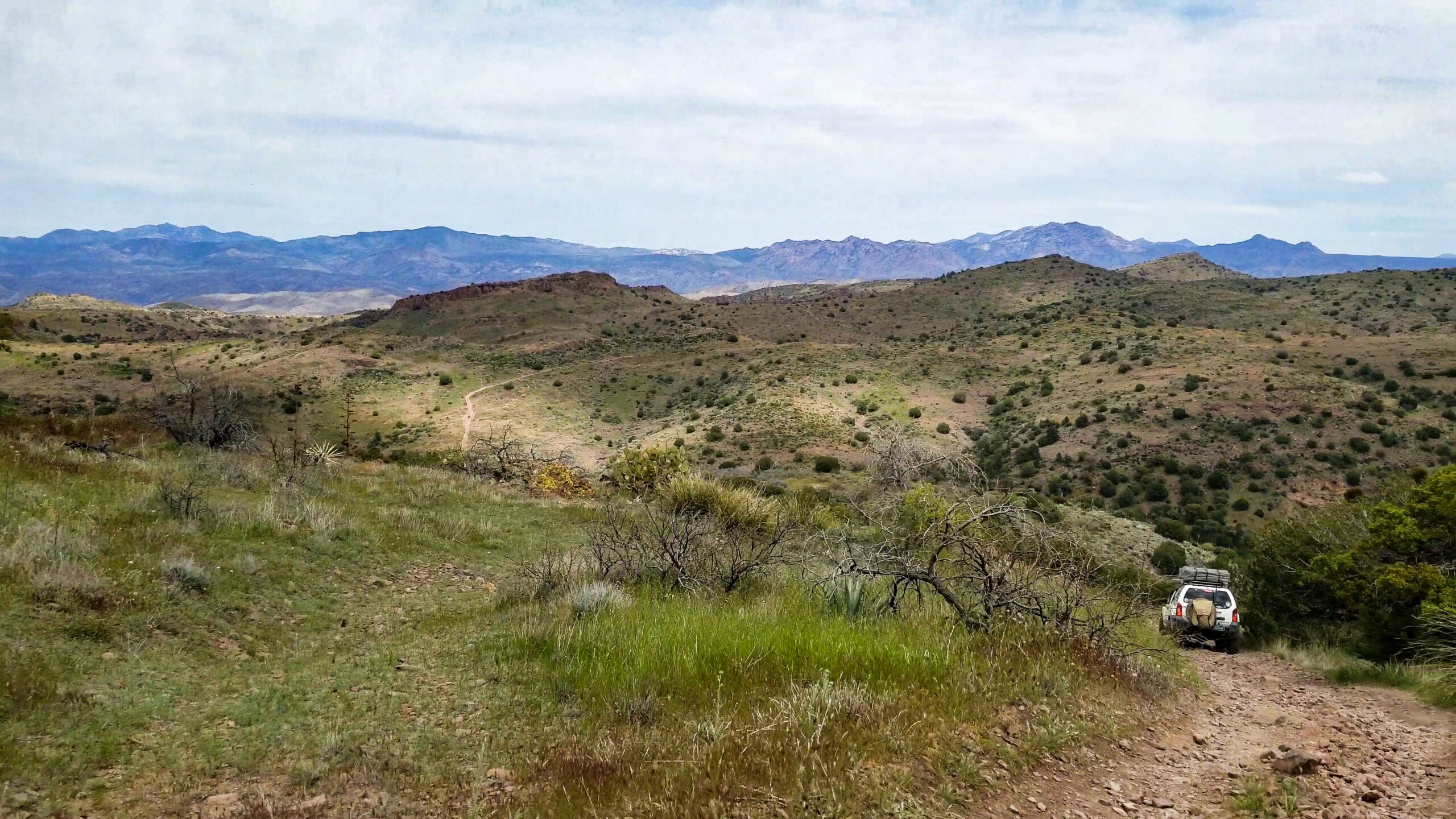Your cart is currently empty!
Posted in
#DoubtTheDrought
Colorado River Basin – Lake Powell and Mead are at the lowest point since their construction. The water, too many folks in the west, especially the farmers, is a serious concern. Now a resolution is starting to emerge in the mainstream that, on the surface, appears will provide us with an abundance of water and forever secure Arizona’s water future. According to politicians, government institutions, and environmental groups, desalination in the Sea Of Cortez and Porto Libertad, Mexico will provide abundant water and is the cure-all solution to our current water issues.
Desalination is the process of removing salt from seawater or brackish groundwater to make freshwater for human use or agriculture. It is a water augmentation process that is hailed by desalination proponents as a green renewable technological advancement that can help save the planet. But is desalination truly the answer? Will it really provide us with an abundance of water? What does it mean for recreation and agriculture? Just as importantly, who will own, operate, and control the desalination plants, pipelines, and canals to deliver desalinated water?
We have lots of questions and have set out to find the answers. In doing so, we have indulged in one of the most complicated subjects of land use policy. The Western Water Saga.
A global Monopoly On Water
“By 2030, expand international cooperation and capacity-building support to developing countries in water- and sanitation-related activities and programmes, including water harvesting, desalination, water efficiency, wastewater treatment, recycling and reuse technologies”
Transforming our world: the 2030 Agenda for Sustainable Development Goal 6.a
Desalination can be found in the UN Sustainable Development Agenda 21 and Agenda 2030 under goal number 6a. It is being addressed by the UN under the guise of Science, Technology, and Innovation (STI) right next to Contact Tracing and Artificial Intelligence. It is the chosen unconventional technology by the United Nations to transition our water supply into a so-called green renewable resource, and convert unusable brackish groundwater into an economic resource.
Science, technology, and innovation to achieve sustainable development goal 6a includes several unconventional and conventional technologies to create or treat water for human use. These technologies include desalination, weather modification, rainwater harvesting, wastewater treatment, atmospheric moisture harvesting, and even ideas that include towing and impounding icebergs for drinking water.

G-STIC
The UN admits they have fallen behind on their 2030 goal to fully implement the Sustainable Development Agenda and has convened several action groups to put the implementation of desalination on the fast track. The United Nations Global Sustainable Technology and Innovation Community (G-STIC) was started in 2017 as a global initiative to accelerate the development, dissemination, and deployment of technological innovations that help achieve the Sustainable Development Goals outlined in Agenda 2030.
G-STIC is part of the UN Science, Technology, and Innovation Forum and is run by Belgium-based research firm Vision On Technology For A Better World (VITO). Some of the G-STIC partners include the China Academy of Sciences, the Japan Science and Technology Agency, UN-Habitat, and the India Institute of Medical Science.
The first G-STIC event in 2017 called for the United Nations to embrace desalination to advance sustainable development goal 6. The next year, the 2018 conference in New York showcased market-ready and scalable solutions to world leaders that can be applied in their own countries to significantly contribute to the Sustainable Development Goals. G-STIC proclaimed that desalination is a viable solution while identifying the social, economic, and environmental challenges of implementing market-ready desalination for “community water supply.”

The 2019 G-STIC conference illustrated how integrated technology solutions are helping achieve the Sustainable Development Goals, and highlighted multiple market-ready technological solutions “to bring about paradigm shifts and move societies and economies onto more sustainable development paths.” According to G-STIC, “Agenda 2030 requires new ways of doing business and deep technological transitions are part and parcel of it.”
The 2021 G-STIC Conference held in Dubi, hosed the “Flanders Approach to prioritizing water” and again showcased technological solutions to seawater desalination.
UN-Water
A proposed Task Force on Unconventional Water Resources was set forth at the August 2017 UN-Water meeting by Vladimir Smakhtin, the Director of the United Nations University Institute of Water, Environment and Health (UNU-INWEH). Vladimir Smakhtin is a researcher who holds a Ph.D. in hydrology and water resources from the Russian Academy of Science in Moscow, Russia.
The United Nations University Institute of Water, Environment and Health (UNU-INWEH) was commissioned by UN-Water for 2018-2019, to lead the UN-Water Task Force on Unconventional Water Resources to promote a global vision around unconventional water resources and transform marginal-quality water resources into assets. They established “science-based solutions” and policy recommendations for the management, and implementation of unconventional water resources, and have published a plethora of research papers on the subject.
Some of the UNU-INWEH Unconventional Water Resource partners in the United States include the University of California, the New Mexico Institute of Mining and Technology, and A Ripple Effect PLC. However, the UN-Water members and partners are also involved which includes a massive list of global NGOs.

These NGOs infect every institution of our local communities and governments with policies that implement the sustainable development agenda. They are known for establishing various unknown government committees, task forces, collaboratives, and boards to which the general public pays little attention. Utilizing task forces, boards, working groups, governor bureaucracy, mega global corporations, and campaign budgets, these NGOs are able to implement the agreements made at the global level. These NGOs do everything from setting industry standards to mobilizing activist actions that prompt political action.
The International Union For The Conservation of Nature, for example, claims to be, “the global authority on the status of the natural world and the measures needed to safeguard it.” The union consists of local governments, politicians, environmental groups, and city, county, state, and federal bureaucratic agencies who all work to Implement the agreements made by the Convention On Biological Diversity.
Direct influence in Arizona
One important organization listed is the Ramsar Convention on Wetlands of International Importance. This agreement has a direct impact on water resources in the entire Colorado River Basin, California, and even the Rio Grande in Texas. The Convention is tasked with implementing a treaty signed by the US in 1971 in Ramsar, Iran to protect wetlands.
The US is represented by, what the convention calls, the “Designated Ramsar Administrative Authority” for the US. This administrative authority is a combination of the Bureau of Oceans and International Environmental and Scientific Affairs, the U.S. Department of State, the U.S. Fish and Wildlife Service, and the U.S. Department of the Interior. The US signed the agreement in 1986 and has funded a large portion of the convention’s efforts through the Wetlands For The Future Fund. The United States has submitted national reports to the Conference of Parties since 1999 detailing its efforts to implement the agreement. In their reports, the US highlights several actions that have been taken, such as the Clean Water Act, to implement the global agreement in the US.
Article one of the convention gives a broad definition of “wetland” that could include a rain puddle.
“For the purpose of this Convention wetlands are areas of marsh, fen, peatland or water, whether natural or artificial, permanent or temporary, with water that is static or flowing, fresh, brackish or salt, including areas of marine water the depth of which at low tide does not exceed six metres.”
On page two of the convention, the agreement stipulates that “each Contracting Party shall designate suitable wetlands within its territory for inclusion in a List of Wetlands of International Importance, hereinafter referred to as “the List” which is maintained by the bureau established under Article 8.” Article 8 of the agreement establishes the International Union for Conservation of Nature as the “Bureau” charged with maintaining designated Ramsar Sites.
The Ramsar convention has a total of 2,455 designated “Ramsar sites” across the world consisting of 255 million acres of protected areas. In the US, there are a total of 41 sites covering a total of 10.5 million acres of wetlands as defined above. Designated Ramsar sites include the Colorado River Delta, Tijuana River, San Francisco Bay, the Colorado River Delta Remnant Wetland System which is located in the middle of a massive agricultural area south of Mexicali, and multiple sites in the Gulf of California
The Colorado River Delta is part of a vast area with four designations under international agreements that have manipulated US policy since the 1970s. The area shares designations as a UNESCO Biosphere Reserve under the Man and Biosphere Program, a World Heritage Site, an international reserve of the Hemispheric Network for Shore Birds, and a Ramsar Wetland of International Importance.

In 2001, an information sheet was published by the director of the Gulf of California Biosphere Reserve detailing the importance of the wetland and the history of conservation measures in the Colorado River Delta. On page 14, the Ramsar information sheet highlights conservation measures introduced but not yet implemented. Here is where it gets dirty.
24. Conservation measures proposed but not yet implemented:
Several proposals are under consideration for conservation or management of wetlands in this region that include:
Carrying out direct management activities at the juncture of Río Hardy and the Colorado River for restoration of wetlands;
International management to obtain permanent freshwater quotas for the delta and Upper Gulf of California.
The convention has carried out both of these goals through the United States International Boundary and Water Commission, Bureau of Reclamation, US Fish and Wildlife, multiple water districts throughout all Colorado River Basin States, and by renegotiating the 1944 water treaty with the US and Mexico.
Renegotiation of the 1944 water treaty between the US and Mexico
The International Boundary and Water Commission was responsible for establishing the international boundary between US and Mexico and is one of the oldest agencies of the federal government. Dating back to 1889, this little-known Commission has maintained treaties, including those under the various agreements of the Colorado River. In particular, the commission is responsible for maintaining the 1944 water treaty that allocates 1.5 million acre-feet of water to Mexico.
In 2017, the commission agreed on Minute 323, known as, “Extension of Cooperative Measures and Adoption of a Binational Water Scarcity Contingency Plan in the Colorado River Basin.” This minute renegotiated the 1944 water treaty and combined it with minute 319 which allowed an additional 200,000 acre-feet of emergency water for Tijuana in 2010, and has been continuously extended ever since. The additional water permanently increased Mexico’s allocation from 1.5 to 1.7 million acre-feet and repurposed the additional water for environmental restoration projects in the Colorado River Delta.
Minute 323, along with the drought contingency plans of Colorado River Basin states, reallocated water, cut off AZ farmers, and creates what’s known as Mexico Intentionally Created Surplus. Mexico Intentionally Created Surplus allows local water authorities to return unused water to the Colorado River and receive a credit in lake Mead in return.
Minute 323 establish an Environmental Workgroup, funded by the US Bureau of Reclamation, US Geological Survey, and US Fish and Wildlife to oversee restoration projects and study the effects of additional water deliveries to the Colorado River Delta. They published a report in August of 2022 titled Biennial Report Of Monitoring of Environmental Flows In the Limitrophe and Delta of the Colorado River which details the effects of water deliveries in the Colorado River Delta and the 2018 Implementation Report that was published in April 2020 and details the implementation of minute 323.
The workgroup carried out several projects in the Colorado River Delta including improvements to agriculture canals to deliver water to restoration sites, dredging the delta to promote environmental flows, and even acquiring land grants from the Mexican government.
Minute 323 Desalination Workgroup
The minute also established a Workgroup on Desalination to study desalination opportunities in the Sea of Cortez. The Workgroup published their 722-page study titled Binational Study on Desalination Opportunities in the Sea of Cortez in 2018. They identified eight desalination plant opportunities that could pipe water into the US, or offset water deliveries from the Colorado River under the various water agreements.
The 2021 United States National Report on the Implementation Of the Ramsar Convention details the most recent efforts to support Ramsar resolutions VIII.1 calling for the reallocation of water to support wetland habitat; XII.12 a call to action to ensure and protect the water requirements for wetland habitats; and whether data has been collected to support VIII.2 implementing a report issued by the World Commission on Dams titled, Dams and development: A new framework for decision-making that includes suggestions such as releasing water from dams to purposely flood the downstream river to promote the movement of sediment. The World Commission on Dams was convened by The World Bank and the International Union For the Conservation of Nature “to undertake the huge task of assessing the past performance and future role of large dams.”
On page 10 of the National Report, the US references the Drought Contingency Plan as the means to implement resolutions VIII.1 and VIII.2, and USGS water data to support resolution VIII.2.
Desalination and SDG 6a in the United States
“If we are going achieve the Sustainable Development Goals by 2030 and end extreme poverty as we know it, we need to bring together diverse partners to catalyze the next generation of breakthrough innovations.”
USAID Global Devlopment Lab website.
National Security
Note: A correction was made in this section. We mistakenly implied the Yuma desalination plant was a nuclear powered facility. When, in fact, it’s powered by the Hoover Dam. Nuclear reactors were part of the original proposal and never came to fruition. Clarification and corrections have been made.
According to the International Atomic Energy Agency and the International Desalination Association, only nuclear reactors can provide the necessary energy to power commercial-scale desalination facilities and make water affordable to the consumer. The International Atomic Energy Agency claims to have developed a brine-free desalination process. By doing so, the UN has removed hesitation to implement nuclear desalination by many of the most influential environmental groups.
Discussions on the use of nuclear power for desalination are avoided while the UN and their accredited NGOs praise France, Pakistan, Libya, and several other countries that have recently started nuclear desalination projects to fulfill their contributions to the Paris Climate Agreement.
Arizona currently has one desalination plant that is powered by the Hoover Dam. The plant is located near Morlos Dam along the Colorado River near the international boundary. The original proposal for the facility in the 1960s, included the use of nuclear reactors in the Gulf of California but was struck down, citing National Security concerns over revealing U.S. nuclear secrets. A new plan was set forth, to construct nuclear reactors on the US side of the border, but ultimately failed.
The Yuma desalinization plant was constructed in 1992 and is capable of processing 73 million gallons of water per day, but has only operated twice in its lifetime. The International Boundary and Water Commission Minute 312 requires water deliveries to Mexico to meet the listed salinity levels in order to count toward Mexico’s 1.5 million acre-feet allocation from the Colorado River.
US Commitment
The United States has committed to the UN agenda for Sustainable development goal 6a for desalination in a statement made by the United States in 2014 to the UN Commission on Science and Technology For Development, part of the UN Economic Council. In this statement, the US uses the DESAL Challenge, a competition to create small-scale desalination systems to treat brackish groundwater by the US Agency For International Development, as an example of how the US is working to Advance the global efforts of the 17 Sustainable Development Goals.
They also highlight the Science, Technology, and Innovation (STI) used to solve the Ebola outbreak in Africa, and later claim to attach “the highest priority to harnessing the capacity of STI to these ends” and note the launch of the US Global Development Lab from the USAID, to scale up US investments in these areas. Although now deleted, the Global Development Lab website is available in the internet archives.
Read our Special Report on Statewide Interoperability that killed the bill in the Arizona Legislature. The statewide system was Contact Tracing disguised as border security and is directly connected to the UN Science, Technology, and Innovation used during the 2014 Ebola outbreak in Africa.
The Bureau of Reclamation (BOR) has been indulging in desalination technology since 1997 and operates the Desalination and Water Purification Research Program in partnership with American Membrane Technology Association (AMTA). BOR and AMTA currently monitor 247 desalination projects across the US. The American Membrane Technology Association is an affiliate of the International Desalination Association (IDA) and is a direct partner with the United Nations.
Arizona Desalination Study
Pima County recently conducted a study to evaluate the feasibility and cost of developing a desalination plant in the Sea of Cortez in Mexico and delivering water via a 200-mile pipeline. The study compared the proposed project to current desalination plants around the world. One of those comparisons was the Carlsbad Desalination Plant in California.
The Carlsbad Desalination Plant is located In Carlsbad, California. According to its website, the plant produces zero emissions while creating approximately 50 million gallons of water per day with a lifetime production to date, of 30 billion gallons. The Carlsbad plant serves over 400,000 people in the San Diego valley. According to its website, it is the largest and most environmentally friendly desalination plant in the western hemisphere.
The Carlsbad Desalination Plant was built by Poseidon Water which holds Patent# US6946081B2 on a desalination process that uses thermoelectric generators to convert heat generated during the desalination process into electricity. This technological advancement, they claim, allows desalination plants to offset their carbon emissions and operate nearly carbon-free.
Poseidon Water is owned by Brookfield Asset Management, a publicly-traded Canadian-based firm with over $725 Billion dollars in assets, and operates in over 30 countries around the world. Some of the well-known corporations that are invested in Brookfield include Alibaba, Kohl’s, Wal-Mart, Vulcan Materials Company, Boot Barn, Fox Corporation, Tractor Supply Company, and scores of others.
On Brookfield’s website, they proudly announce their commitment to net-zero carbon emissions by the year 2050 or sooner, and commit to transitioning 2/3 of their portfolio away from scope one and two carbon emissions. On their website, they claim to help advance the transition to net-zero and state the following, “We will catalyze companies onto net-zero pathways aligned with the Paris Agreement through our new global transition investment strategy, focusing specifically on investments that will accelerate the transition to a net-zero carbon economy.“
The California plant is owned by Aberdeen Standard Investments. A Scottland-based investment firm that happens to be the most significant investment firm in the European Union. On Aberdeen’s website, you will find their “Modern Slavery Statement” and their Environmental Social Governance (ESG) Infrastructure Policy.
In section 5 of ESG The Infrastructure Policy, Aberdeen asserts their “Minimal Safeguards and Alignment With Global Standards” to include the World Bank’s International Finance Corporation Performance Standards, the UN’s Global Compact 10 Principles, UN Guiding Principles on Business and Human Rights, and other global initiatives.
According to the Arizona study,
- Over 200 miles of pipeline will be constructed between Arizona and Purto Libertad.
- Multiple pumping facilities will operate on solar energy to pump water uphill.
- Brine waist from the desalination process will be injected into Arizona aquifers.
- The project will cost over $4.5 Billion dollars to construct and an estimated $171.6 million dollars annually to operate and maintain.
- The consumer will pay nearly $1,000 per acre foot of water compared to the current average of $250 which translates to about $60 a month for a single-family home.
- 50% of the project will be funded by the federal government and the rest will be paid back over the next 50 years.
Desalination in the Sea Of Cortez, Purto Libertad, Mexico is dominated by Agenda 2030 Corporations
Purto Libertad, Mexico is a hotspot for desalination and solar fields, with projects currently in development along Baja California, and in Sonora. There are several proposals for multiple desalination plants to either offset Colorado River water delivered to Mexico, or pipe water into the states from Desalination Facilities along the Mexico coast.
“We commit ourselves to new Sustainable Development Goals…we recognize that our most basic bond—our common humanity—compels us to act…we reaffirm that supporting development is not charity, but is instead one of the smartest investments we can make in our own future.”
— President Barack Obama.
Conclusion
The Sustainable Development Agenda has been in the works for a long time. In other areas of the agenda addressing other issues such as cap and trade, we know that these world entities have openly admitted, that they need to force the people and industry into a corner to “spark innovation” to solve climate change and poverty.
The stated goal of radical environmental groups such as the Glen Canyon Institute, and American Rivers, is to return the Colorado River, and other rivers, to their natural state. This is enshrined by UN-accredited non-governmental organizations like the International Union For The Conservation Of Nature, and smaller NGOs, which provide guidance to policymakers, lawmakers, and activist groups to achieve the UN Sustainable Development Agenda. These groups work at the local and national levels on environmental, social, and other causes while running massive propaganda campaigns that resemble the Soviet Union.
We are met with a lot of backlash concerning this topic. Anything that may disrupt the man-made global warming conspiracy theory can not be tolerated. Nor can any scrutiny of the desalination scheme be allowed.
Many desalination proponents are unaware of how desalination fits into the globalist sustainable development agenda, and how our reservoirs are being purposely drained to support that agenda. The overwhelming evidence that proves our reservoirs on the Colorado River are draining to the ocean solidifies the agenda is real.
Our reservoirs are being purposely drained to the ocean to sustain multiple fish populations and dilute sewage dumps on the California coast. While California holds priority water rights in the Colorado river, they are the last to take cuts and are sending water to San Fransisco Bay in massive amounts. All the while, politicians and government institutions are claiming drought to usher in a corporate monopoly of western water rights.
This subject brings to light, the compliance of both political parties with the United Nations climate change agenda. While one side of the political aisle pushes to manipulate policy and international agreements to benefit the environmental movement. The other side is openly promoting the desalination goals enumerated in Sustainable Development Goal 6A of the UN Sustainable Development Agenda and is poised to make billions of dollars in the process.
We The People are on our own.
You may also like…

Visit the AZBackroads.com Store

Please Become A Member
We need your help to keep our backroads open. Please join today!









